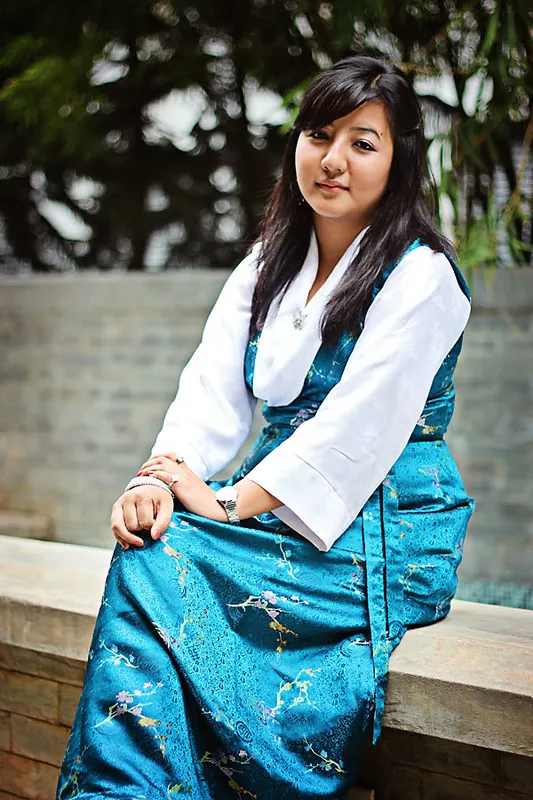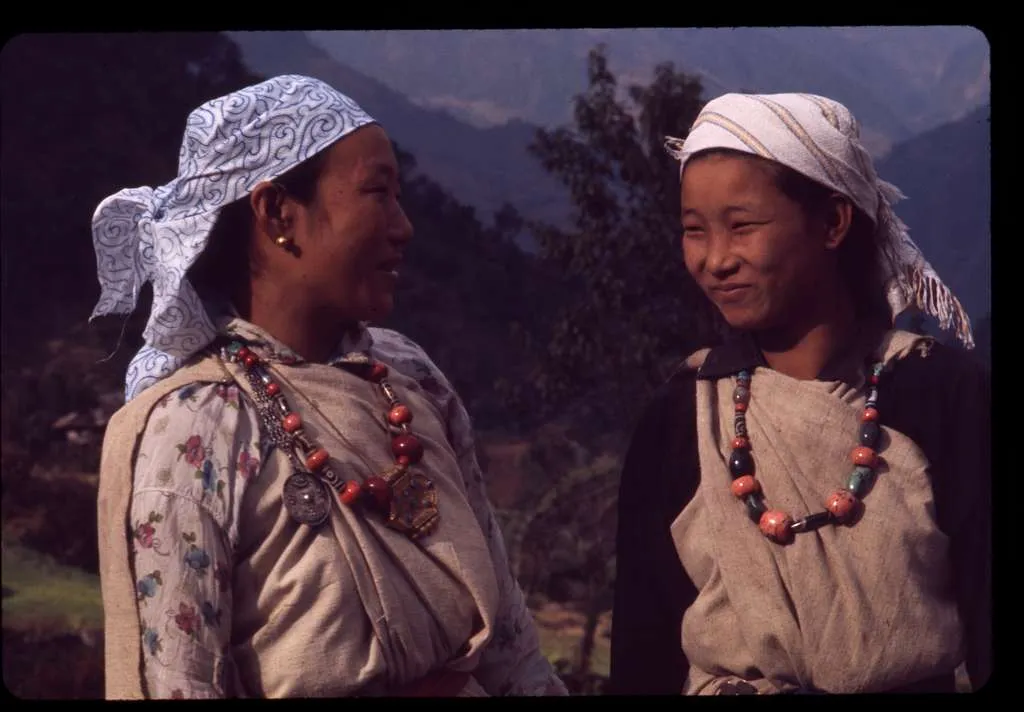Table of Contents
Traditions hold a big part in understanding the culture of any state or region or even an area. Likewise traditional dress of any particular region tells a lot about their culture. How many times we visit a particular state but all we concentrate upon is the places to visit. Even though I am not denying the importance of structures, monuments and construction, they are obviously not the only thing that depicts a region. If you are someone who loves knowing about the culture and significance of a particular state you will love reading this article. Here we will be discussing the traditional dress of Sikkim.
The beautiful North eastern state of Sikkim holds its cultural roots close. This state has a lot to offer its visitors and you will be excited to know them too. However if you are interested to know the state and its culture you cannot ignore the traditional dress of Sikkim. Also the population in Sikkim is a mix of Nepalis, Bhutia and Lepchas. These three communities have a lot in common when it comes to attire. However they also differ in some elements. In this article I will discuss about what is the traditional dress of Sikkim. So keep on reading this article as it will be a helpful read for you.
Traditional Dress of Sikkim
Kho or Bakhu

When it comes to the name of traditional dress of Sikkim that is most popular it is Kho or Bakhu. There is a reason why this dress has 2 names. Basically Kho and Bakhu are similar to each other. Kho is worn by the Nepalis in Sikkim, whereas Bakhu is worn by the Bhutias in Sikkim. They basically call the same attire with a different name. Furthermore this traditional dress of Sikkim is a simple attire. Both men and women wear this dress in Sikkim. Somehow Bakhu also looks like the Chuba of Tibet. Some similarities between the two can be seen. However there are some differences in the pattern of sleeves.
Kho or Bakhu is basically a cloak-like dress. It is tied from the neck as well from the waist. A lot of times silk or cotton belts are used around the waist to give a structured look. While some prefer to keep it loose too. In recent times this traditional dress of Sikkim is worn with a modern touch. With the development of dressing styles certain modifications had been added to how this attire is styled.
Furthermore to keep up with the modern day fashion and styling the way this dress is worn has changed. These days, modern women prefer wearing Kho or Bakhu along with jeans as well. It is like an amalgamation of western and traditional style of dressing. To keep up with fashion and modern day needs the traditional dress is worn with such twists that look pretty.
Pharia
The Pharia dress of Sikkim is a traditional dress worn by Nepalese women in Sikkim. It is the most graceful traditional dress of Sikkim that looks vibrant. Available in multiple hues, Pharia is mostly worn by women in Sikkim during festivals. Here the upper body is wrapped in a loose fitted blouse. Then the upper body is covered in a cloth. Furthermore it is also fastened from all four sides. There are different ways actually that are used to carry this outfit. Some even wrap a cloth on top of the other things which gives them a smarter look. A type of shawl known as Majetro shawl is also worn by a lot of women.
To compliment the attire multiple accessories can be paired with it. One of the accessories is a piece of clothing known as Hembari. It is used to wrap around the waist along with Pharia. Overall the look is very vibrant and a popular traditional dress of Sikkim for females.
Read More: TRADITIONAL DRESS OF ASSAM | ASSAM TRADITIONAL DRESS
Thokro Dum
Another popular traditional dress of Sikkim is Thokro Dum. This one is an interesting attire worn specifically by the Lepcha community. It is mostly observed that the bread makers of this community mostly wear Thokro Dum than anybody else. Furthermore the initial purpose of this attire was to wear it only during religious or cultural occasions. But with time the Lepcha community started wearing this more often.
This outfit is a combination of a pajama and a shirt. Here the pajama is white that stretches up to the calves. Almost looking like a martial art outfit, Thokro Dum is worn with a shirt. This shirt is known as Yenthatse which is a typical Lepcha shirt. The combination of Thokro Dum with the shirt is paired the best and looks great together. Furthermore a cap is also worn along with it known as Shambho. Along with that there is a piece of cloth as well. This cloth is pinned on one shoulder and then held like a waistband.
Shuruval
Another Traditional Dress of Sikkim Male is Shuruval. It is a dress mostly worn by Nepalese men. This is a fashionable outfit that was invented by Nepalese to maintain their fashion quotient along with culture. It is an outfit with trousers as bottom wear. On top of that there is a double breasted garment worn till the waist. However the interesting part of this outfit is the bottom wear. There is a churidar bottom that sticks to the legs completely which is known as Shuruval.
Furthermore there is a shirt worn with Shuruval known as Daura. Many men also prefer to wear it with Patuki which is one kind of waistcoat that goes well with the attire. Along with that a belt is also used often. They also carry a Kukri which is a heavy weapon along with this outfit. The weapon is carried in a leather case that is known as Daab. This outfit looks stylish yet has a very distinct traditional touch to it.
Dumvum
This is a traditional dress of Sikkim worn by women of the Lepcha community. It is an outfit that involves a piece of cloth similar to that of a saree. Furthermore also known as Dumyam this is an ankle length outfit. Available in a beautiful combination of colours, the texture of the outfit is smooth and silky. It can ideally be described as a dress that brings style, culture and vibrancy together. The women of the Lepcha community wear this outfit during festivals mostly or during any cultural occasions.
Furthermore they pair this outfit with a loose fitted blouse underneath. This blouse is known as Tago and it goes really well with the Dumvum. To further accessorize the look a belt is also worn known as Nyamrek. Along with that a cap is worn with it known as Taro. While there are some women who prefer carrying a multi coloured scarf with this outfit that is known as Gorey. There can be various ways to style up this particular traditional dress of Sikkim. And in each scenario they look extremely colourful and vibrant.
Types of Dumvum
However this outfit is also worn by them obviously not in the same manner. There is a specific and distinct style for the men who wear it. The accessories are also different when men wear the Dumvum. The calf length of the bottom wear of Thokro Dum indicates that the people wearing it belong to marshy lands. While the flowy style of Dumvum indicates that the people are from dry lands.
Also the quality of the Dumvum for both men and women are different. While the Dumvum for women is silky and lighter, the male outfit is made with coarse material. It also suggests the lifestyle of both the genders categorically as it has always been like during the past. The coarse material indicates the labour of men in fields and forests. While the flowy light material of women’s costume indicates their grace and feminine nature.
Wedding attire of Sikkim
The outfit worn by the people of Sikkim during the wedding is a lot similar to the dresses mentioned above. However there are some obvious differences and significance of the wedding outfit too. This traditional dress of Sikkim worn in weddings mostly includes a royal gown for both men and women. Most of the time, the communities wear an outfit known as royal Baku. Furthermore, because it is a special attire the process of making the dress is different from regular dresses.
Also the fabric is also different than how it usually is. The fabric of the Royal Baku is Royal if we can say that. Mostly it is made from the finest qualities of silk and looks distinct from regular outfits. The groom also wears a similar outfit designed differently. Usually the men wear loose trousers and some changes are also made for the outfit of the groom as well.
Wrapping Up!
The clothing style and traditional dresses of Sikkim shows their diversity. It further highlights the co-existence of various communities residing in the same state. The traditional outfit of any location is extremely important to understand the intricate details about a particular location. From the socio-cultural set up, to traditional and values, you can get an insight from the traditional dress. So if you are ever visiting Sikkim I am sure this article on the traditional dress of Sikkim will be extremely helpful for you.
Furthermore, now that you have the traditional dress of Sikkim name list with you, you can even check them out when you visit there. The various communities living in Sikkim and their traditional dresses are something they hold close.
Next time when you visit Sikkim try to understand the state from a different perspective. I am sure other than just visiting the popular places of a region, their culture, lifestyle and dresses will give you a better understanding of the location. So do let me know if this article on traditional dress of Sikkim is helpful for you. Also let me know when you are planning a trip to this location.


